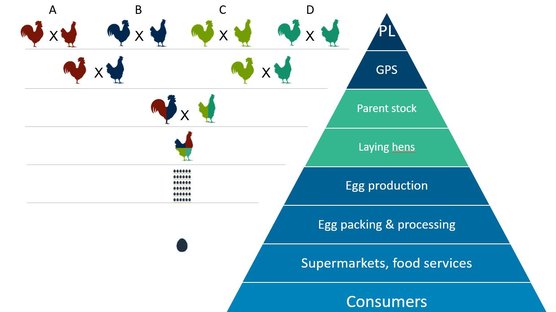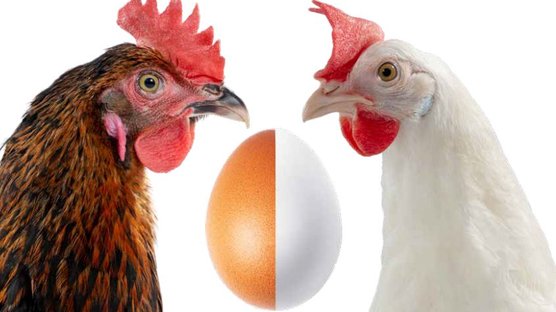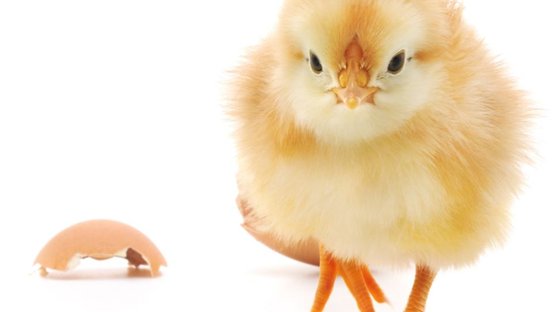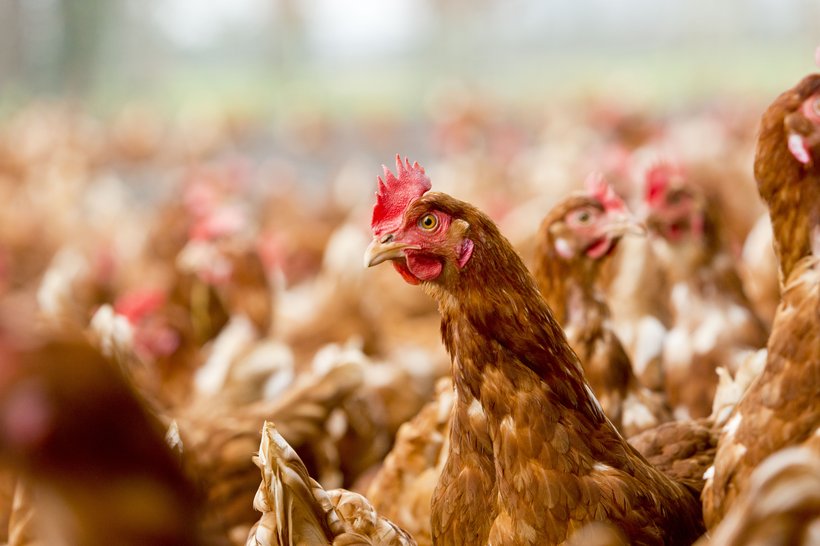
Published on Sept. 20, 2019
Breeding to improve liveability
Breeding for liveability is a key focus for our breeding department. How do we achieve this goal? A conversation with Teun van de Braak, Geneticist for Hendrix Genetics in the Layer department.
How do you breed chickens suitable to practical conditions?
Our pure line animals are kept/housed under extreme high biosecurity conditions that do not reflect the average commercial farm conditions. By selecting only for the performance of our Pure Line birds, we would be selecting the wrong birds, birds that won’t perform optimally under commercial conditions.
Therefore, as a very important part of our breeding program, we place many test birds in commercial trials. With the results from these trials, we can breed for increasingly efficient chickens with improved liveability. The trials, also known as progeny tests, have been a standard part of the breeding program for decades and these trials have proven their added value over time.
We perform our progeny tests in several countries over the world. Per country the tests are carried out under the local conditions, e.g. regular local diets, densities and management.
What is the advantage of your progeny tests?
Testing progeny’s biggest advantage is that it allows us to assess the individual selection of cockerels with greater accuracy. The more measurements conducted, the more accurate your breeding values become. This allows us to make progress faster.
If you look at the performance of a large number of descendants from a single, individual cockerel and then average that, you can rule out environmental factors such as shed climate, disease levels and feed quality. This allows you to automatically select the birds best suited to practice. An additional advantage is that testing a cockerel on the basis of its daughters’ performance also eliminates the ‘background noise’ of genetic influences that are not passed on from the parents to their offspring.
Heterosis is another effect we can measure in the progeny tests. Heterosis is the effect that the progeny outperfoms their parents when it comes to certain characteristics; for instance, egg weights are a lot higher in crossbreds than compared to the egg weight of the pure line birds. Furthermore, these tests also provide a good impression of the differences between the various commercial and experimental crossbreds. This allows us to guarantee continuity for future genetic improvement and enables us to provide our clients with the best advice.
What do you do in the field of liveability in breeding?
At various locations around the world we test the birds using challenge tests. These differ in structure depending on what legislation in the various countries permits. For example, laws governing accommodation and occupancy levels are different in North America than they are in Western Europe. In these challenge tests, the birds are kept with intact beaks, and we do not even allow the InfraRed welfare treatment.
This reflects existing laws in Germany and may be the norm for animal welfare standards in the future. Just like during the standard progeny tests, the birds are raised together in family groups on the basis of the maximum occupancy level permitted by law. In this way, the birds are stimulated by their immediate environment, particularly by their (half) siblings they share their cage with. For certain families this will lead to a higher rate of mortality due to cannibalism.
We often also notice birds with less than optimal plumage. Measuring and registering these characteristics provides us a with a good view on the (feather)pecking and the mortalities due to cannibalism in families allowing us to select the best families.
Is progress in the field of liveability in breeding demonstrable?
Definitely! One of the best ways of demonstrating this is to look at the results of our own tests (see the graph below). The graph reveals that since the introduction of challenge tests in 2004, the variation between tests has decreased as far as liveability is concerned.
The birds’ liveability has become increasingly predictable. General liveability is also improving as the green triangles are coming closer together. Another independent method of revealing the progress in our products is analyzing various Random Sample Tests we conduct around the globe.
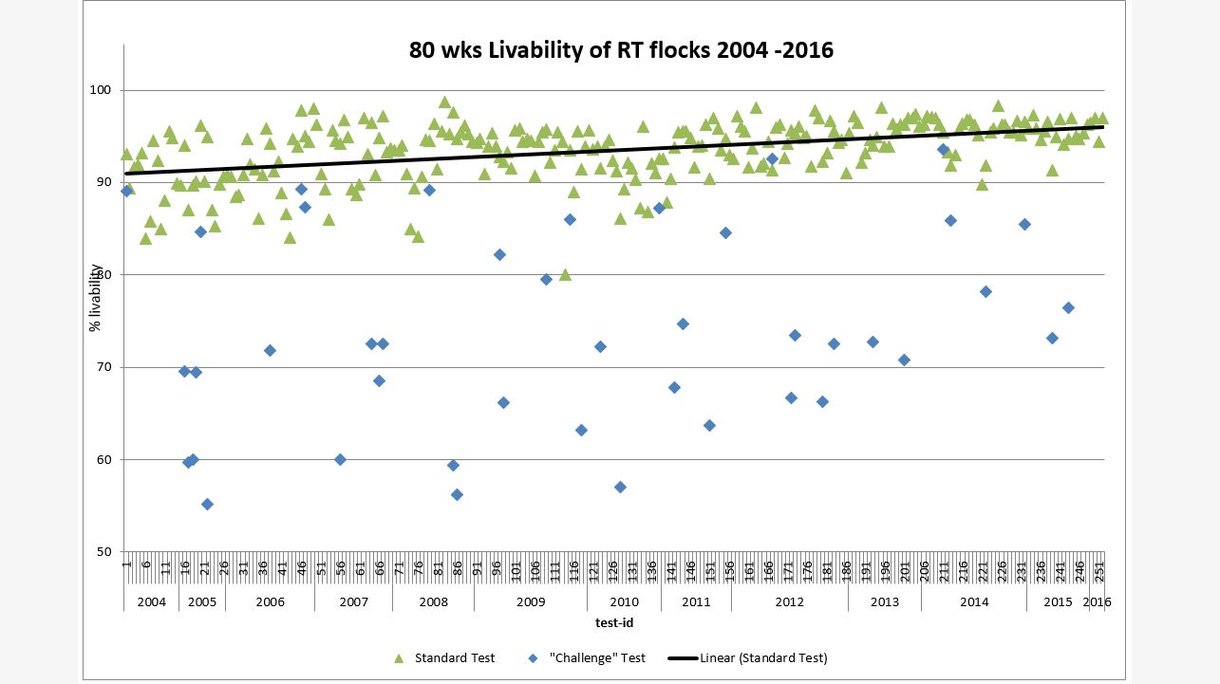
If you study the thick black line you will notice that, over the years, the liveability percentage has risen. In other words, the average liveability for layers in our tests has improved. This is reflected by farming practice where there is a lower death rate due to improved genetics and modifications to hen management.
Breeding for improved liveability remains an important part of our breeding program. Testing in real world environments allows us to make the best decisions so, ultimately, our customers can get the best performance from their flocks.

